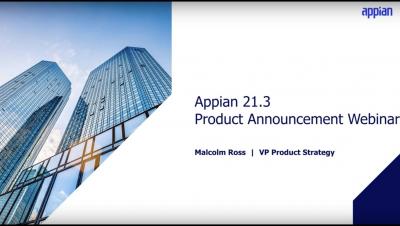Appian and Accenture bring speed, simplicity and confidence to auto and equipment finance
We’ve been speaking with many auto and equipment finance organizations over the last year, and they all say that their technology landscape is growing more complex by the day. The Auto and Equipment Finance Orchestration solution that Accenture has built with Appian seeks to address this.





